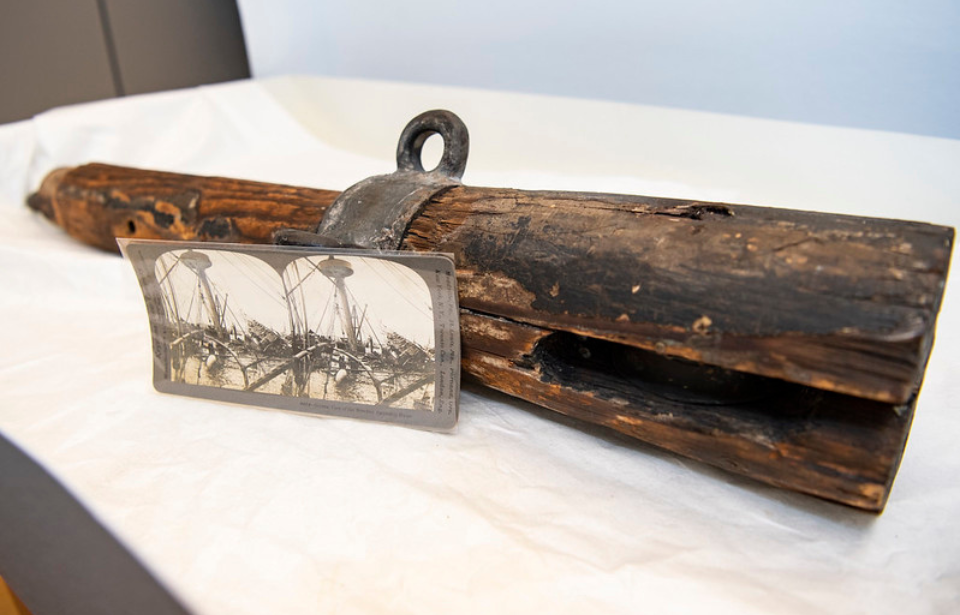The Washington Post is reporting that preservation efforts have begun on a piece of wooden spar discovered at a garage sale and later confirmed to have come from the USS Maine (1889). The vessel sank under suspicious circumstances in 1898 during the Cuban War of Independence. The work, geared at preventing the artifact from further deteriorating, comes months after the piece was donated to Arlington National Cemetery.
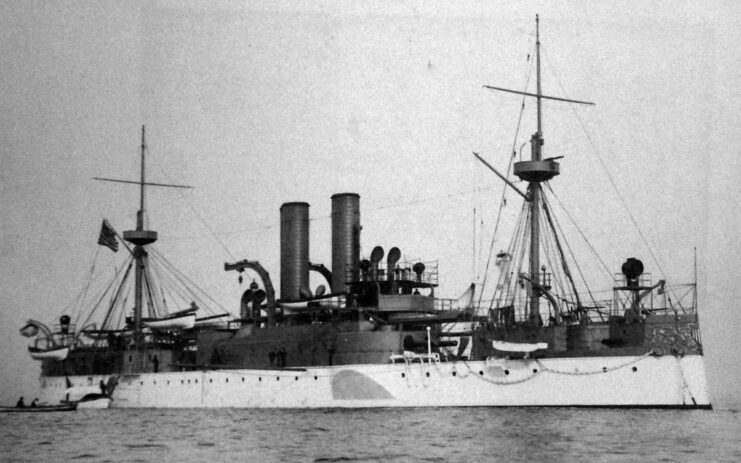
The three-foot wooden spar was reportedly discovered at a garage sale and donated to the Pascack Historical Society in Park Ridge, New Jersey. While told by the donor that it came from Maine, the society’s members had their doubts.
“The history was a little vague,” Kristin Beuscher, the society’s president, told The Washington Post. “Somebody walked in and told us they had bought this artifact. The person selling it said it had been given to him by a friend who had been a diver on the wreck of the USS Maine. The donor believed it should be in a museum, so he brought it to us. There was no provenance to back it up. It was just a story.”
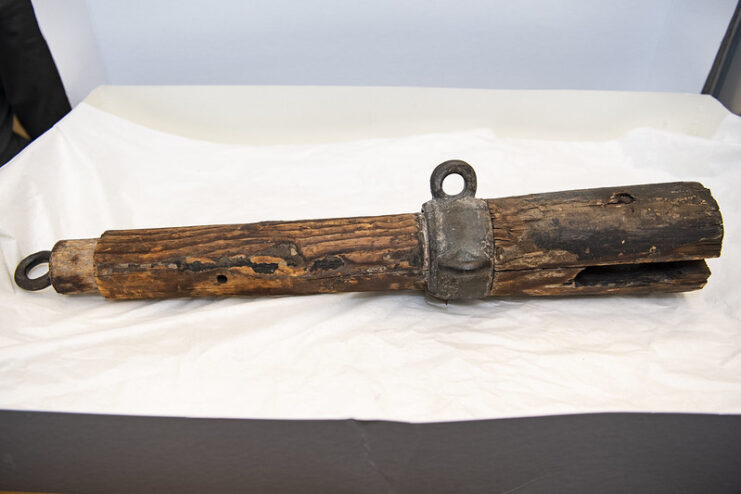
The USS Maine was launched in 1889 and commissioned into service with the US Navy six years later. Along with the USS Texas (1892), she was intended to show the world the advancements the United States had made in terms of its warship design, but the vessels were already considered obsolete by the time they were completed.
Maine operated throughout the North Atlantic for most of her service before being sent to Havana Harbor, in Cuba, to protect American interests during the Cuban War of Independence (1895-98). She arrived on January 25, 1898.
On February 15, Maine exploded in an incident that’s still debated by historians to this day. While investigations found that the powder charges for the ship’s guns had ignited, the reason why they did was never definitively confirmed. Whatever the reason, the blast resulted in the deaths of 261 crewmen, most of whom were sleeping in the enlisted quarters. Just 16 of the 94 survivors made it out uninjured.
The incident sparked the Spanish-American War two months later. Not long after, the phrase “Remember the Maine!” traveled across the US, driving citizens to enlist in the military. The country’s forces were deployed to the Caribbean and the Philippines, with the over-three-month-long conflict ending in a US victory that saw the end of the Spanish Empire in both America and Asia.
As for Maine, she remained at the bottom of Havana Harbor for over a decade, until her hull was patched up enough for her to be towed to sea and scuttled in the Strait of Florida. She currently rests 3,600 below the water’s surface.
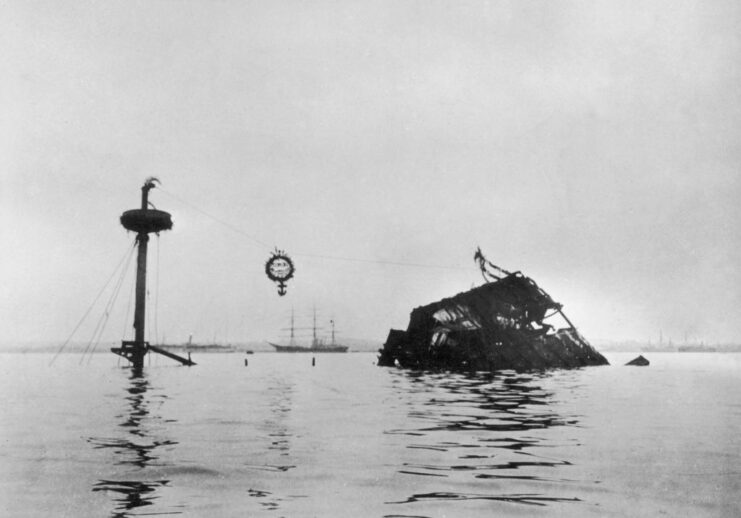
It wasn’t until two years ago that retired history teacher Christopher Kersting decided to figure out once and for all if the artifact’s reported origins were true. He contacted Peter McSherry, who edits Spanamwar.com, a website about the Spanish-American War, who suggested he speak with officials at Arlington National Cemetery, which is home to the USS Maine Memorial.
Kersting provided Roderick Ganier, the chief curator of the cemetery’s museum, with all the photos and documents he had on the wooden spar. Almost immediately, he had a feeling the piece was the real deal. However, like the former history teacher, he had to figure out for sure.
That’s when Ganier approached retired US Navy Capt. Steve Whitaker, who is an expert on the USS Maine. After examining the piece in person, the latter determined that the wood and iron fittings matched the materials used to construct the vessel.
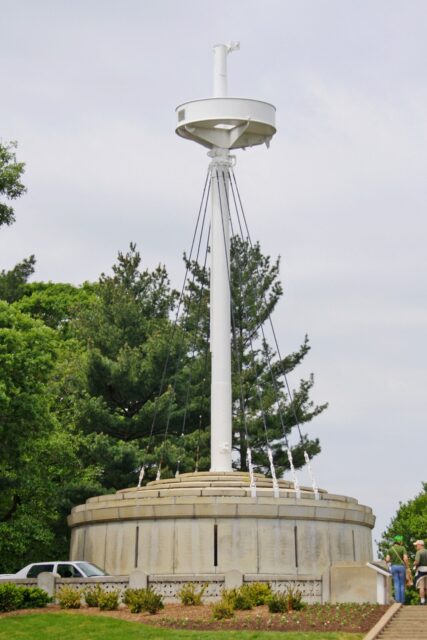
Whitaker also found that the flecks of paint across the spar matched the historical description of Maine. The vessel had originally been painted with a whitewash, but was subsequently covered in tan, then black, paint for better camouflage during nighttime operations.
“There are definitely three types of paint remains on this relic,” Whitaker told The Washington Post. “There’s a black oil-based overcoat with a lead-based coat underneath that was sort of a straw color. Underneath that there are remnants of a whitewash paint.”
His examination didn’t end there. He compared photos of Maine before and after the 1898 explosion, with a photo of the wreck in Havana Harbor from ’99 giving him the definitive proof he was looking for. “There is a narrow window of time when the ship is being taken apart, so we see the different stages of salvage,” he said. “The cross member of this spar is on the mast until we get to this photo, where it’s gone. You can see it was cut off.”
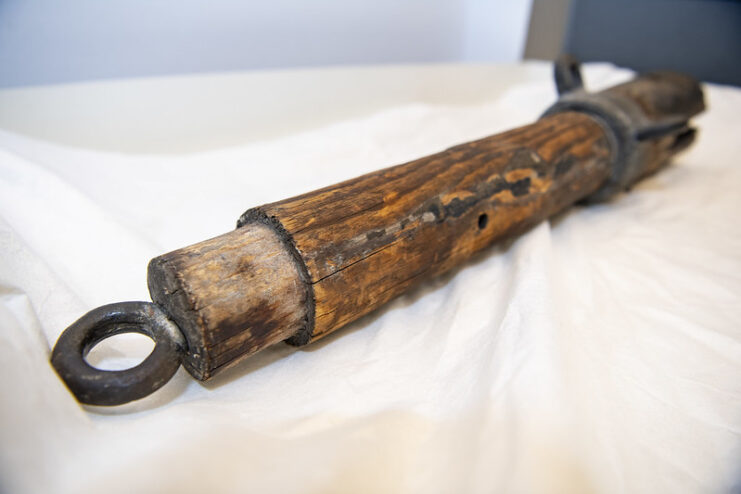
When presented with the evidence, Beuscher decided that the Pasack Historical Society wasn’t the wooden piece’s rightful home and offered it to Arlington National Cemetery. The transfer was done in March 2023, with conservators beginning a multi-year effort to protect the piece from further deterioration this month.
More from us: Shipboard Cannon Found Off Swedish Coast Believed to Be Oldest In Europe
Speaking with The Washington Post, Whitaker explained that his job isn’t over, as he’s determined to find out who cut off the spar from the mast. He hopes uncovering the person’s identity will tell him how the artifact wound up in New Jersey – or, at least, get him one step closer to the answer.
